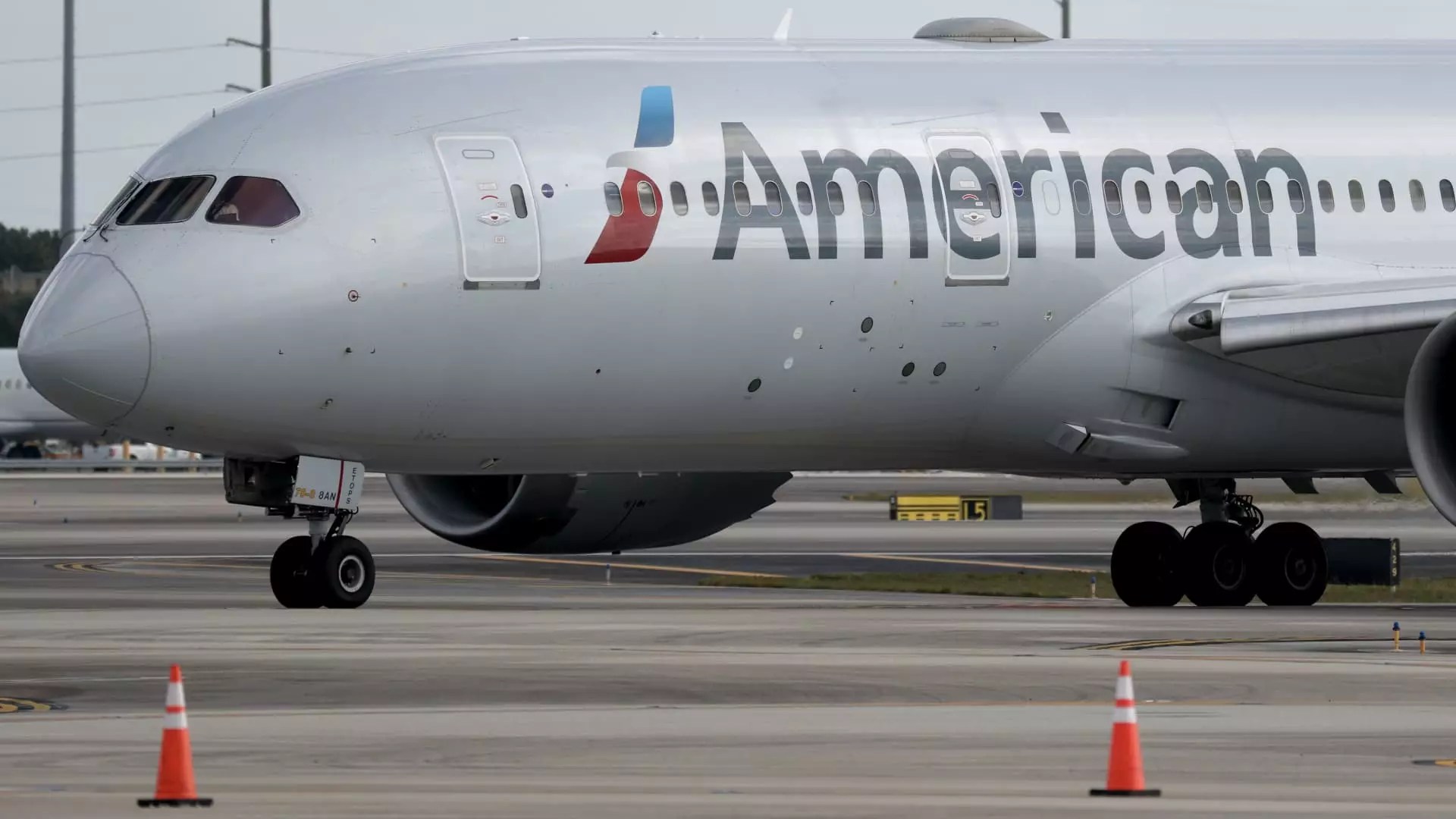American Airlines made headlines when it opted to withdraw its 2025 financial guidance, an unprecedented move in the airline industry that reflects deepening concerns over the U.S. economy. CEO Robert Isom’s comments on CNBC underscore these fears, revealing a stark truth: domestic leisure travel bookings had plummeted post-January despite a somewhat strong fourth quarter. This volatility suggests that American Airlines is grappling with not just seasonal fluctuation but potentially a more persistent economic downturn. What does this mean for the entire industry?
The airline noted a modest increase in unit revenue in the first quarter—just 0.7%—primarily bolstered by international bookings and premium cabin sales. This insight reveals a crucial trend: more affluent travelers are keeping the industry buoyant while the more price-sensitive leisure travelers hold back. This discrepancy raises questions about the sustainability of revenue growth amidst such an economic landscape—can the airlines rely solely on premium clientele, especially if economic pressures worsen?
The Broader Industry Impact
American Airlines is not isolated in its struggles; competitors like Delta and United are also feeling the squeeze. It’s worth pondering the effect this has on market competition and consumer choice. Airlines may become overly reliant on affluent travelers, neglecting their budget-conscious counterparts, potentially alienating a significant portion of their customer base. While premium travel may provide short-term financial relief, in the long run, it risks creating a fragmented market, eroding brand loyalty and customer satisfaction.
The airline’s forecast for a second-quarter revenue decline of as much as 2% only adds to the dark cloud hanging over the industry. Industry analysts were betting on a modest growth of 2.2%, revealing a growing disconnect between corporate expectations and actual market conditions. Failure to meet Wall Street estimates with adjusted earnings—projected between 50 cents and $1 compared to analysts’ 99 cents—further illustrates a troubling alignment of internal strategies vs. external realities.
Consequences of Strategic Missteps
American Airlines’ struggles reflect broader systemic issues within the airline sector, including misguided operational strategies. The “failed business strategy” rhetoric suggests a reactive approach rather than a proactive one. The attempt to rebuild its corporate travel segments amid a radically changing economic landscape may be too little, too late. It is essential to evaluate how sustained economic uncertainty can catalyze rapid shifts in travel behavior and, consequently, profitability.
Adding to these hurdles is the harrowing accident of American Eagle Flight 5342, which has undoubtedly shaken both consumer confidence and corporate morale. With 67 fatalities resulting from a collision during landing, such tragic events inevitably cast long shadows over airline reputations. In this emotional landscape, reclaiming public trust will prove to be a formidable challenge.
Ultimately, American Airlines’ recent moves paint a grim picture of an airline under siege from external forces and internal miscalculations. It’s a clarion call for the industry: proactive strategies, flexible business models, and a customer-centric approach are no longer optional but essential.


Leave a Reply